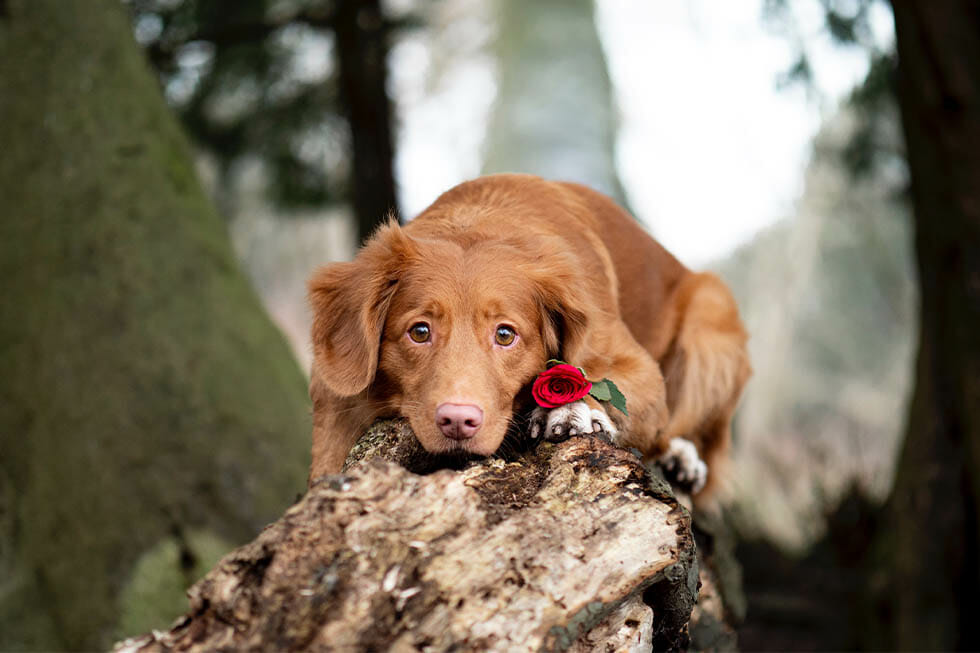
Chocolate Poisoning – Valentine’s Day
As Australians get ready to indulge in some sweet treats and rose overload, Pet Insurance Australia has a timely reminder about the dangers lurking behind the expected romantic gestures.
“It’s that time of year again when many will be awaiting an out-pouring of romance this Valentine’s Day,” Crighton says. “However, it’s really important that people ensure their pets are kept safe.”
Some pets, particularly dogs will go to extreme levels to access sweet treats and chocolate.
“Chocolate is bad for a number of reasons,” Crighton says. “The fat and sugar content and also the combination of caffeine and theobromine.”
When dogs ingest a large amount of fat it can lead to pancreatitis and pain in the abdomen. This severe metabolic change can be deadly. But it’s the combination of caffeine and theobromine found in chocolate that can cause a host of deadly problems for our beloved canine companions.
“Common symptoms are vomiting diarrhea and pain,” Crighton says. “While theobromine and caffeine poisoning can result in other symptoms such as panting, tremors, seizures, high heart rate, abnormal heart rhythm, coma and possibly death.”
Toxicity depends on the amount of chocolate eaten, the type of chocolate, and the size of your dog. The darker the chocolate the more at risk your pet is of becoming seriously ill.
“The common levels for milk chocolate are around 14g per kilogram of weight to cause serious issues,” Crighton warns. “For dark chocolate, this is as little as 3.5g per kilogram of weight.”
With Valentine’s Day around the corner, it is expected chocolate poisoning cases in pets to increase.
“It’s just about being safe and ensuring you keep the chocolate safely in a cupboard and out of sniff reach for your pet,” Crighton says. “Chocolate is also toxic for cats, however, they seem to be less curious as our canine companions, so there are significantly fewer incidents.”
During festive seasons, such as Easter, Christmas, and Valentine’s day, the rate of toxicity caused by chocolate can climb as high as 200%.
“We see this trend year on year, so it’s paramount pet owners are vigilant when it comes to storing their chocolate and sweet treats.”
What about flowers?
“If you are thinking outside the rose box this year and going for another flower arrangement for your beloved, ensure they do not have a cat, before purchasing lilies in your flower arragnement,” Crighton warns. “They are highly toxic to cats and kittens.”
Cats are unique in their susceptibility to lily poisoning, which can cause acute kidney failure. All parts of the lily plant are toxic to cats and that includes the stem, leaves, and roots – even licking the pollen off their coat can result in poisoning.
Within two hours of ingestion, vomiting, lethargy, and lack of appetite can occur. As the acute kidney damage develops, cats will show signs of weakness, drooling, drinking, urinating more often, tremors, and even seizures. If left untreated, cats can die within a few days to a week.
“Sadly even with intensive treatment, some cats do not survive,” Crighton says. “So before you click ‘send’ on your flower arrangement for your cat-loving partner, double-check there are no lily’s and substitute for another flower.”
If you suspect your cat has ingested any part of a lily it is advised to seek veterinary treatment quickly.
Featured by:
Photo by Jamie Street
Get the latest Pet Insider Tips & News
We offer award-winning* pet insurance policies to protect your furry friend’s health and wellbeing. Get a quote today and give your pets the care they deserve.
Archives
Categories
- Cat Care (64)
- Cats (1)
- Dog Care (124)
- Guides (28)
- Health and Nutrition (200)
- Lifestyle and Activities (218)
- Media Release (23)
- Pet Care (246)
- Rescue Dogs (1)

